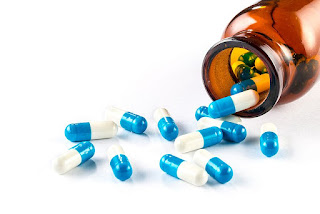Pruritus,
commonly known as itching, is an unpleasant sensation that prompts the urge to
scratch. Itching can occur anywhere on the body, but is often caused by dry
skin, insect bites, skin infections, kidney or liver disease, malnutrition,
medications, stress, and other medical conditions. The use of pruritus therapeutics
such as antihistamines, counterirritants, local anesthetics, corticosteroids,
immunosuppressants, and moisturizers provide effective relief from itching.
The global Pruritus Therapeutics Market is estimated to be valued at US$ 70.64
Bn in 2023 and is expected to exhibit a CAGR
of 6.9% over the forecast period 2023 to 2030, as highlighted in a new
report published by Coherent Market Insights.
Market key trends:
The rising prevalence of skin disorders such as atopic dermatitis,
psoriasis, urticaria, scabies, and others has increased the need for pruritus
therapeutics to manage itching symptoms. This serves as a key driver for market
growth. According to the International Forum for Dermatology Research, nearly
20% of the global population suffers from skin diseases and around 300,000 new
cases of skin diseases are reported annually in the United States alone. Thus,
increasing skin disorder cases have accelerated the demand for anti-itch
medications to curb pruritus symptoms effectively.
Segment Analysis
The
global
pruritus therapeutics market size can be segmented based on type into
acute pruritus, skin infections, chronic pruritus, kidney disorders,
drug-induced pruritus, and others. The chronic pruritus segment dominates the
market as chronic pruritus is characterized by long-term itching that lasts for
over six weeks. Some of the common causes of chronic pruritus include aging,
skin dryness, atopic dermatitis, and urticaria.
Key Takeaways
The
global pruritus therapeutics market is expected to witness high growth over the
forecast period. Growing geriatric population where incidence of chronic
pruritic conditions is higher presents an opportunity.
Regional
analysis: North America holds the largest share of the pruritus therapeutics
market owing to the growing prevalence of atopic dermatitis and easy access to
modern healthcare technologies in this region. Europe is the second largest
market due to established healthcare infrastructure and high healthcare
spending.
Key players: Key players operating in the pruritus therapeutics market include
Levantina, Polycor, Indian Natural Stones, Topalidis, Dermitzakis, Antolini,
Amso, Pakistan Onyx Marble & Granite, Etgran, Mumal Marbles, Tepia, Arizona
Tile, Vetter Stone, Tekmarble & Granite, Temerty Stone, Dal Tile, M S
International, Pokarna Limited, Cosentino.
Get
more insights on this topic: https://www.newsstatix.com/pruritus-therapeutics-market-share-and-opportunity-analysis/




Comments
Post a Comment